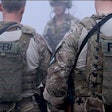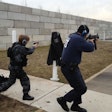Welcome to Police Magazine’s weekly online SWAT column. This column will discuss SWAT/Tactical issues facing law enforcement today. For clarification purposes, SWAT will be used to describe the various names for tactical: Tactical, SRT, ERT, ESU, etc.
Let’s start by discussing where SWAT is today, where it came from, and where it is headed.
Few innovations in law enforcement have had the impact that SWAT has had over the last 40 years. SWAT was born of necessity in response to escalating violence in America in the 1960s that was often beyond the capability of the police. While some cities had versions of specialized police units, it wasn’t until the Los Angeles Police Department formed its SWAT team that “special operations” came to law enforcement. A testimony to the success and impact of SWAT is that today most jurisdictions have access to SWAT teams.
SWAT is to law enforcement as Special Operations are to the military; it’s a profession within a profession. Both SWAT and Spec Ops employ highly trained teams and personnel, using unconventional tactics and methods to successfully resolve high-risk situations. However, SWAT is civilian law enforcement, and not “military” as some critics argue. The SWAT mission is to save lives, and SWAT’s track record of success speaks for itself.
The military is far ahead of law enforcement when it comes to learning from history. Perhaps this is due to law enforcement’s comparatively short history. SWAT’s history is even shorter. Yet, we need to learn from the lessons of the past and apply them to the present, while we look to the future.
Some of you may remember the days before SWAT as hit or miss when it came to high-risk incidents. We were “wingers,” not “planners.” The violent 1960s changed all that, with widespread urban and campus rioting, and a deadly new phenomenon called “the sniper.” Police were both outgunned and unprepared for this double threat. The result was the formation of Special Weapons teams designed to counter these threats, and they did so with resounding success.
The 1970s brought a wave of hostage taking, resulting in NYPD developing trained Hostage Negotiators. The CNT concept, working in tandem with SWAT, quickly spread across the nation and proved to be a tremendous success.
The 1980s were struck by a wave of violence, called crack cocaine. The challenge and threat posed by heavily armed crack/rock dealers in fortified locations was met head-on by SWAT.
The ’90s saw the growth of a deadly phenomenon called the “active shooters.” Columbine was the “wake-up call” that forced law enforcement to realize that time is not on our side when it comes to active shooters, and necessitated decisive rapid intervention. SWAT, led by the National Tactical Officers Association, realized that traditional SWAT response in many instances is not rapid enough. The result is that today SWAT is training first responders in rapid deployment tactics.
Six years ago everything changed for SWAT. The devastating, deadly terrorist attacks of 9/11 let us all know that an enemy is at the gates, and he has only one: goal mass destruction of everything we believe in. Since 2001, law enforcement has forged a partnership with Homeland Security to meet the very real threat of terrorism in America. As Lt. Colonel Dave Grossman says: “The police are America’s domestic warriors, protecting America against terrorists.” That said, SWAT is the tip of the spear of America’s domestic counter-terrorism response.
Future columns will talk about the myriad challenges and issues facing SWAT today and tomorrow, along with lessons learned from the past. Your feedback is both welcome and invited, as SWAT is a specialty where we are constantly learning from each other.












